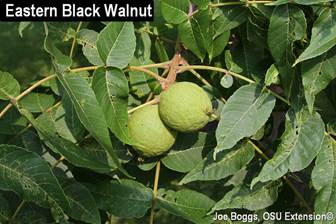THOUSAND CANKERS DISEASE (TCD) UPDATE – DON’T RUSH TO CUT WALNUT TREES
Authors Joe Boggs
Published on August 31, 2018
The long-term outlook for eastern black walnuts (Juglans nigra) seemed dire when the Thousand Cankers Disease (TCD) complex was confirmed in Butler County, OH, in 2013. Thankfully, TCD has not followed the devastating trajectory we originally feared. It is not rolling through our native black walnuts à la emerald ash borer (Agrilus planipennis) rolling through our native ash. The two situations are like apples-to-oranges.
However, there have been some recent reports of Ohio landowners being approached by misinformed timber buyers and loggers citing TCD as a reason to cut and sell walnut trees. There is no support for the pre-salvage harvesting of walnut trees.
Rather than following unsolicited advice, landowners should talk with a professional forester of their choosing before planning any timber harvest including the possible harvest of high-value black walnut trees. The “Ohio Call Before You Cut” is a great resource ((877) 424-8288). See “More Information” below for the website.
BACKGROUND
The TCD complex involves a phytopathogenic fungus, Geosmithia morbida (Gm), carried from tree-to-tree by the Walnut Twig Beetle (WTB), Pityophthorus juglandis, which is a type of bark beetle. Both are found naturally in walnuts native to the southwest U.S. such as Southern California black walnut (J. californica) and Arizona walnut (J. major). However, since the trees, beetles, and fungus co-evolved, TCD does not kill these trees.
Such is not the case with eastern black walnut since it did not co-evolve with the TCD complex. It is generally accepted that unprocessed wood from eastern black walnuts planted in the southwestern U.S. served as vehicles for the TCD complex to hitchhike to other locations in the U.S. Although the exact route is unknown, it eventually arrived in Ohio.
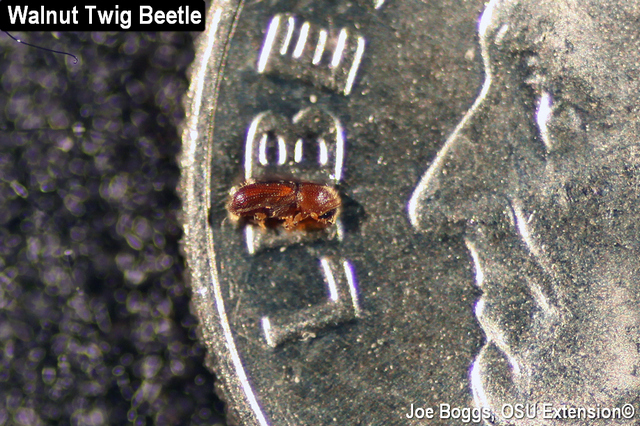
As is common with bark beetles, WTB attacks its host’s stems in multiple locations with the females boring through the bark and tunneling through the phloem. The Gm fungus carried by the beetles infects the surrounding phloem tissue producing small circular to oblong shaped dark brown cankers in the phloem tissue. TCD is so-named because of the collective impact of multiple cankers: “death by a thousand cuts” becomes death by a thousand cankers.
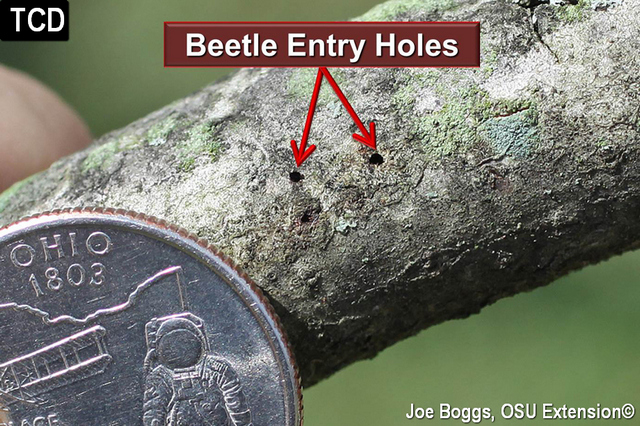
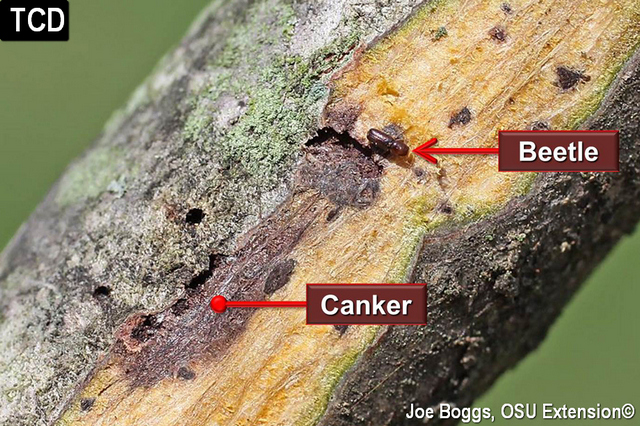
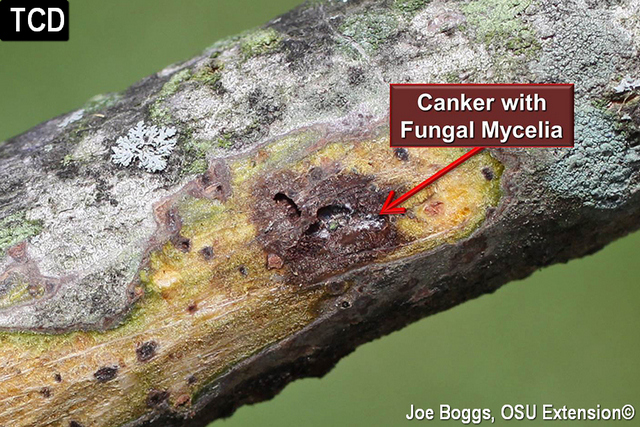
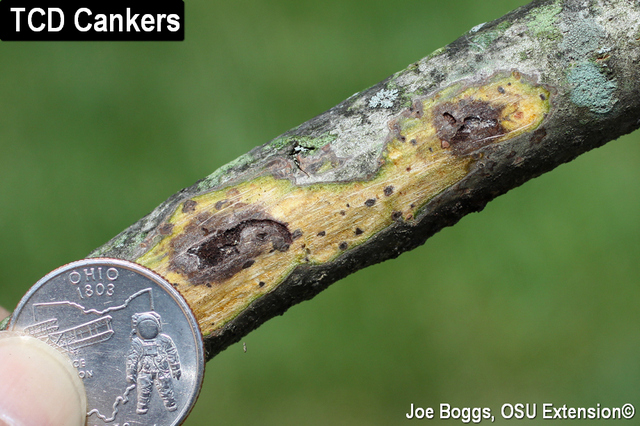
Despite its common name, WTB actually targets branches that are greater than 1/2″ in diameter. They will also tunnel into the main stems. The adult and larval tunneling and feeding activity produce symptoms typical of bark beetles with frass-filled galleries meandering through the phloem.
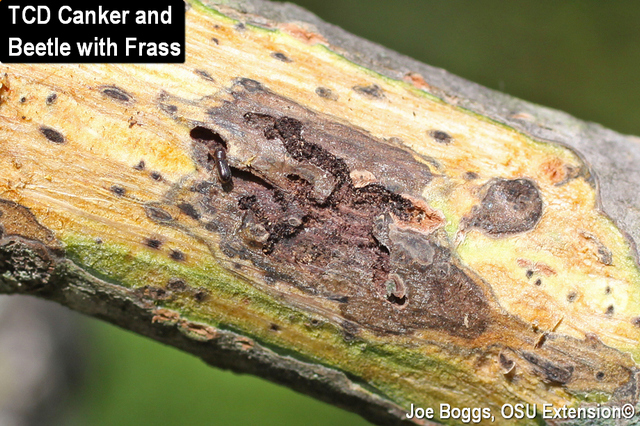
Traps baited with an aggregation pheromone that attracts both male and female WTBs have been available for a number of years. They have been successfully used to detect new WTB infestations in the U.S. as well as evaluating the population densities and the spread of known infestations.
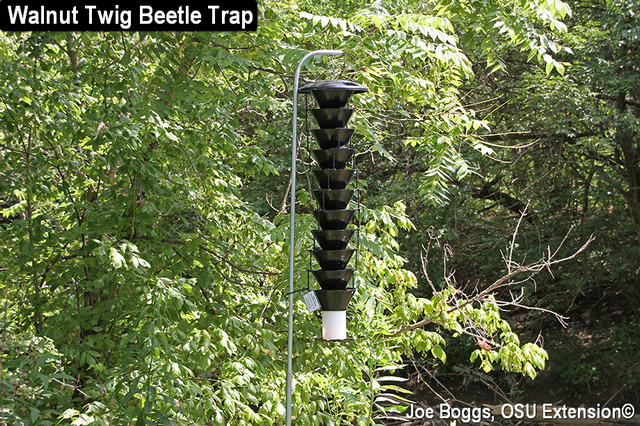
WTB was first detected by traps in Ohio late in 2012. Thanks to a report from an alert landowner, infested and infected trees were found in August 2013. Trap counts were impressively large within the TCD site. For example, the beetle catch shown in the image below was over 1,000 beetles caught in one week. This caused us all to believe TCD was a clear and present danger to our native black walnut trees.
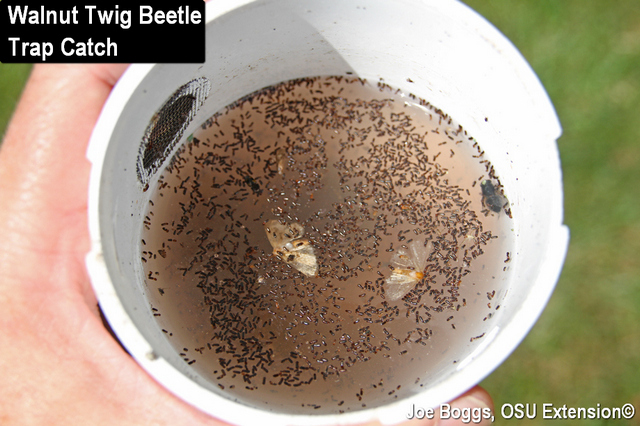
However, in 2014, beetle trap catches dropped off dramatically and have remained low ever since. Only 1 beetle was caught last year in multiple traps deployed to evaluate beetle populations in Ohio. A similar dramatic drop in trap catches was observed that same year in eastern Tennessee where a much larger WTB infestation had been found some years before. In fact, many heavily infested trees in Tennessee that were expected to die have recovered.
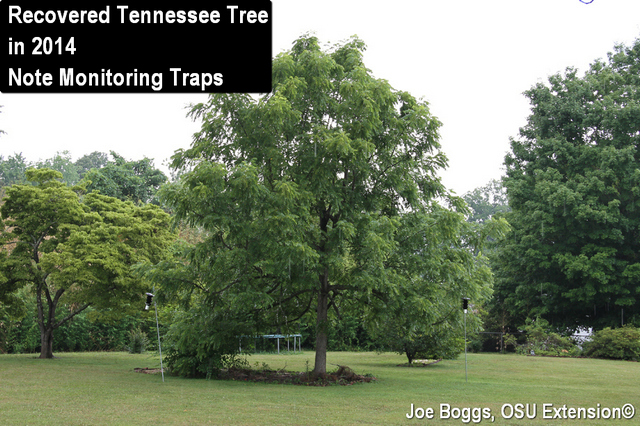
The reason for the sharp decline in beetles as well as the intensity of infections is not entirely known. However, research conducted by University of Minnesota graduate student Andrea Hefty for her Ph.D. thesis revealed that WTB has low-temperature survival thresholds for both the adults and larvae. Some have speculated that the southward shift in the North Polar Vortex during the 2013-14 winter season may have produced temperatures that crossed those thresholds.
Of course, black walnuts trees aren’t out of the woods yet. Even though beetle trap catches are low, they aren’t zero. There is always a chance beetle populations could rebound which is why Butler County, OH, remains quarantined. Movement of walnut trees as well as wood products such as logs cannot be moved outside of the county within Ohio, or outside of the state, without conforming to quarantine restrictions. For details, contact the Ohio Department of Agriculture (ODA).
OBSERVE AND REPORT
The possibility that TCD could rise again is why we must remain vigilant not just in Butler County, but elsewhere in Ohio. Symptoms of TCD include yellowing foliage (chlorosis) that progresses rapidly to brown wilted foliage, and finally branch dieback. Infected trees develop thinning canopies and top dieback with epicormic growth sometimes sprouting from lower portions of main stems.
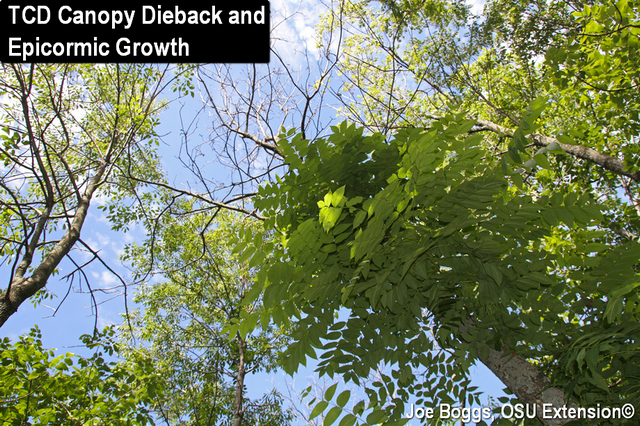
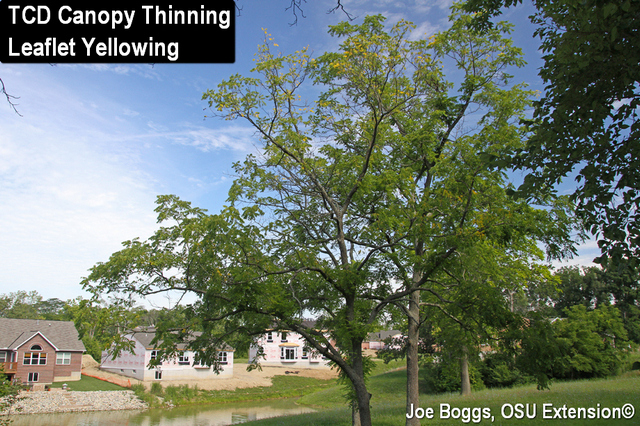
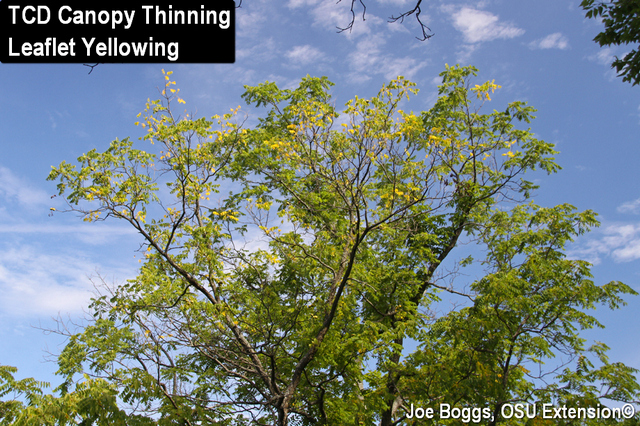
Unfortunately, walnut anthracnose produced by the fungus, Ophiognomonia leptostyla, may be mistaken for symptoms of TCD and vice versa. This is particularly important to keep in mind since the annual dropping of walnut leaflets and leaves due to anthracnose is well underway in southwest Ohio. The fungus is specific to black walnut. Unlike some of the other anthracnose diseases, walnut anthracnose is characterized by small dark brown spots rather than the larger irregularly shaped necrotic lesions seen with ash or oak anthracnose. The spots are responsible for the alternate common name for the disease of walnut black spot.
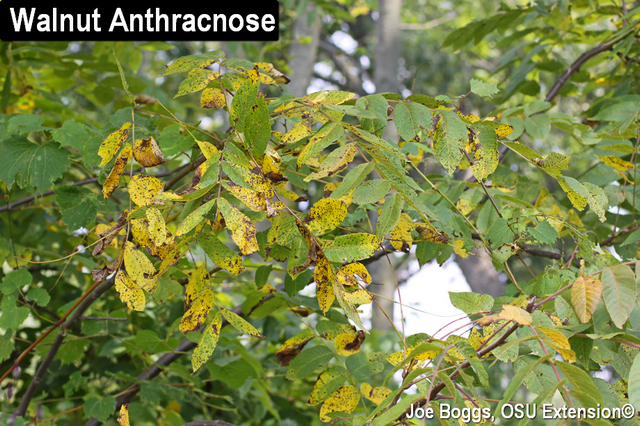
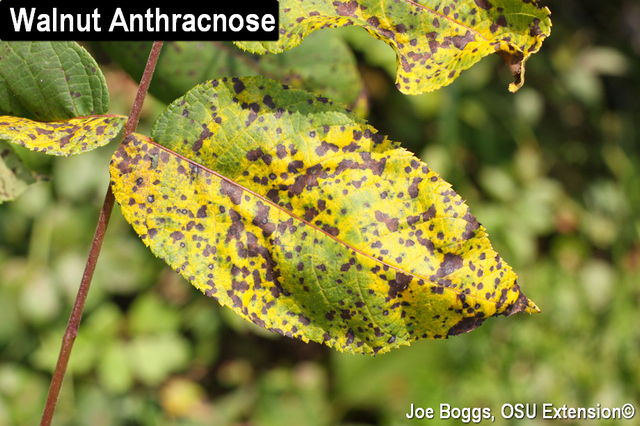
However, don’t rely entirely on the images I’ve provided in this report to eliminate TCD from a diagnosis. If you suspect TCD is affecting a walnut tree, you should contact our ODA. It’s always better to report a suspected occurrence of TCD even if it turns out not to be rather than to ignore an actual TCD site out of fear of being wrong. Remember that TCD in Ohio was originally discovered thanks to an alert landowner contacting our ODA!
More Information…
CALL BEFORE YOU CUT

